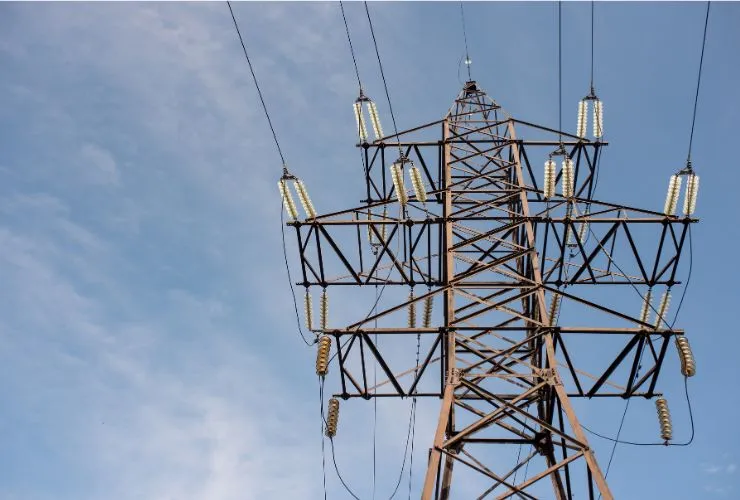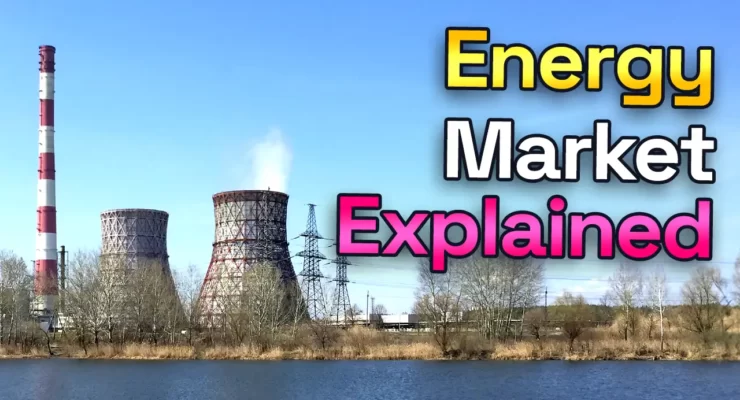Fast read
Australia's electricity market consists of two critical grids: the National Energy Market (NEM) covering the East Coast, and the Western Energy Market (WEM) in South West Western Australia.
The NEM operates as a live wholesale market where electricity is generated by various entities using diverse sources such as coal, natural gas, hydro, wind, solar, and renewables. In the NEM, generators bid prices every 5 minutes, and accepted bids receive payment based on forecast demand.
Energy wholesalers, known as market participants, purchase electricity from generators and resell it to retailers. Retailers offer electricity to end-users with various pricing plans and services, procuring electricity through bilateral contracts or the spot market, where prices are influenced by supply and demand.
The NEM ensures efficient electricity trading, allowing participants to meet demand effectively while offering consumers choices and competitive pricing.
The National Energy Market Explained
Australia has separated into two electricity critical grids, which work slightly differently. They are the National Energy Market (NEM). This covers the East Coast from Far North Queensland to Tasmania and South Australia. The Western Energy Market (WEM) also covers South West Western Australia.
We will focus on the national energy market for a simplified explanation in this case.
Electricity generators
In Australia, different groups make electricity. These can be government-owned companies, private companies, or companies focused on renewable energy development. They all work to produce the electricity we use at home, in businesses, and everywhere else.
To make this power, they use different things like coal, natural gas, and water (hydro). These have been the main ways we get electricity for a long time.
But now, more and more companies are using renewable energy sources like wind and solar power. These are clean and won’t run out like coal and gas. Some companies are also looking into using things like wood waste or heat from the earth to make electricity.
Using a mix of these energy sources helps make sure we have enough electricity. It also helps us move towards cleaner and greener energy for the future.
In Australia, we use different sources to generate electricity. Some of these sources are old-fashioned like coal and gas. Others are newer and cleaner like wind turbines and solar power.
Electrical Wholesaler
The National Electricity Market (NEM) in Australia is a real-time market where electricity is traded every five minutes. The trades happen based on how much electricity is needed to meet demand during those five minutes.
In Australia, energy wholesalers, also known as market participants or electricity dealers, use the national energy market. They buy electricity in large amounts from both traditional power plants and solar energy sources. After buying it, they sell this electricity to retailers.
These wholesalers buy electricity at the current spot market price, which changes depending on how much electricity is available and how much is needed. They make long-term deals by signing contracts with generators and dealers to buy and sell electricity over time.
So, the national energy market is where wholesalers trade electricity in real-time and make deals for the future, ensuring there’s enough power for everyone at fair prices.

Energy Retailers
These are the companies that buy wholesale electricity and provide the service of selling electricity to the end users, homeowners, businesses and industrial users.
Customers in the retail sector have the option of selecting their electricity retailer. Because of the competition among merchants, consumers may now choose from various pricing plans, contract alternatives, and additional services. Retailers can stand out by offering sustainable energy options, intelligent energy management solutions, or value-added services.
They often enter into contracts with wholesalers to obtain electricity at wholesale pricing. Retailers subsequently sell power to customers at retail rates. This might change depending on market conditions, customer demand, and the retailer’s pricing strategy.
So, how does the National Energy Market operate?
The National Energy Market (NEM) in Australia operates as a dynamic and live wholesale market for electricity. The system runs all the time. Generators participate in a bidding process. They sell their electricity every five minutes.
In this competitive environment, electricity generators submit bids or offers specifying the price at which they are willing to supply electricity to the grid. The bids are ranked from lowest to highest, forming what is known as the ‘merit order’.
Generators with the lowest bids are used first to meet electricity demand. Generators with the lowest bids are used first to meet electricity demand. After that, generators with higher bids are dispatched. This continues until enough electricity is secured to match the forecasted demand for that five-minute interval.
Generators that have their bids accepted are then paid based on the highest price bid into the market for that period. This means that even if a generator offers to supply electricity at a lower price, they will be paid the highest accepted bid price. This system incentivises generators to offer competitive prices to increase their chances of being dispatched and earning revenue.
On the other side of the market, electricity retailers participate by buying the electricity they need to meet the demands of their customers. They purchase electricity from the market at the spot price, which is determined by the highest accepted bid from the generators. The spot price changes every five minutes based on supply and demand dynamics in the market.
This real-time pricing mechanism allows retailers to secure the electricity they need at the prevailing market rate. It ensures that electricity is sent out at the lowest price possible. It also maintains a reliable and stable supply of electricity. This helps the market run smoothly.
In Conclusion
This helps ensure that there is enough electricity available when it is needed. The system allows for quick adjustments to meet changing demand. This system fosters competition among generators, encourages efficient pricing, and provides retailers with access to a reliable and dynamic electricity market.
In Australia, we have two main electricity grids: the National Energy Market (NEM) and the Western Energy Market (WEM). The national energy market covers the East Coast from Queensland to South Australia, while the WEM covers South West Western Australia.
In the national energy market, electricity is made by different groups using things like coal, gas, and renewables like wind and solar. Wholesalers buy this electricity and sell it to retailers, who then sell it to us, the customers.
This whole process happens in real time, with prices changing every five minutes based on supply and demand. Generators bid to sell their electricity, and retailers buy what they need at these prices.
So, the national energy market is a dynamic system that ensures we have enough electricity at fair prices, while also encouraging the use of cleaner and greener energy sources. Balancing supply and demand is all about keeping the lights on for everyone.



